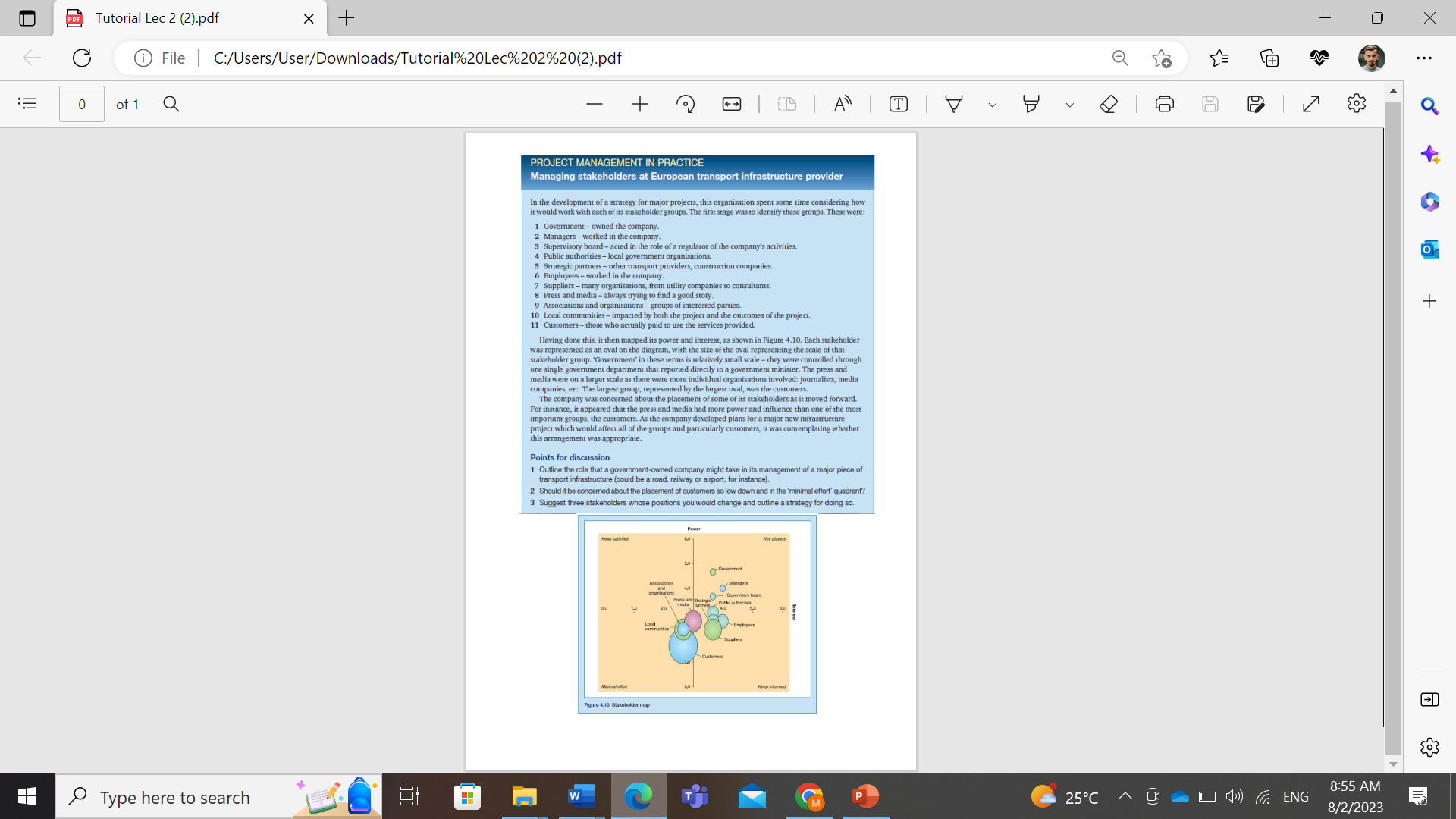Question
PROJECT MANAGEMENT IN PRACTICE Managing stakeholders at European transport infrastructure provider In the development of a strategy for major projects, this organisation spent some time
PROJECT MANAGEMENT IN PRACTICE Managing stakeholders at European transport infrastructure provider In the development of a strategy for major projects, this organisation spent some time considering how it would work with each of its stakeholder groups. The first stage was to identify these groups. These were:
1 Government-owned the company.
2 Managers - worked in the company.
3 Supervisory board- acted in the role of a regulator of the company's activities.
4 Public authorities - local government organisations.
5 Strategic partners - other transport providers, construction companies.
6 Employees - worked in the company.
7 Suppliers - many organisations, from utility companies to consultants.
8 Press and media - always trying to find a good story.
9 Associations and organisations - groups of interested parties.
10 Local communities - impacted by both the project and the outcomes of the project.
11 Customers - those who actually paid to use the services provided.
Having done this, it then mapped its power and interest, as shown in Figure 4.10. Each stakeholder was represented as an oval on the diagram, with the size of the oval representing the scale of that stakeholder group. 'Government' in these terms is relatively small scale - they were controlled through one single government department that reported directly to a government minister. The press and media were on a larger scale as there were more individual organisations involved: journalists, media companies, etc. The largest group, represented by the largest oval, was the customers. The company was concerned about the placement of some of its stakeholders as it moved forward. For instance, it appeared that the press and media had more power and influence than one of the most important groups, the customers. As the company developed plans for a major new infrastructure project which would affect all of the groups and particularly customers, it was contemplating whether this arrangement was appropriate.
Points for discussion
1 Outline the role that a government-owned company might take in its management of a major piece of transport infrastructure (could be a road, railway or airport, for instance).
2 Should it be concerned about the placement of customers so low down and in the 'minimal effort' quadrant?
3 Suggest three stakeholders whose positions you would change and outline a strategy for doing so. Keep satisfied 0,0 Minimal effort
- Associations and organisations
2,0 Local communities Figure
4.10 Stakeholder map Power 6.0 5.0 4.0 Press and Strategic media partners 0.0 Government Managers Supervisory board Public authorities 4,0 Customers 5.0 Employees Suppliers Key players 6.0 Keep informed Interest

Step by Step Solution
There are 3 Steps involved in it
Step: 1

Get Instant Access to Expert-Tailored Solutions
See step-by-step solutions with expert insights and AI powered tools for academic success
Step: 2

Step: 3

Ace Your Homework with AI
Get the answers you need in no time with our AI-driven, step-by-step assistance
Get Started


